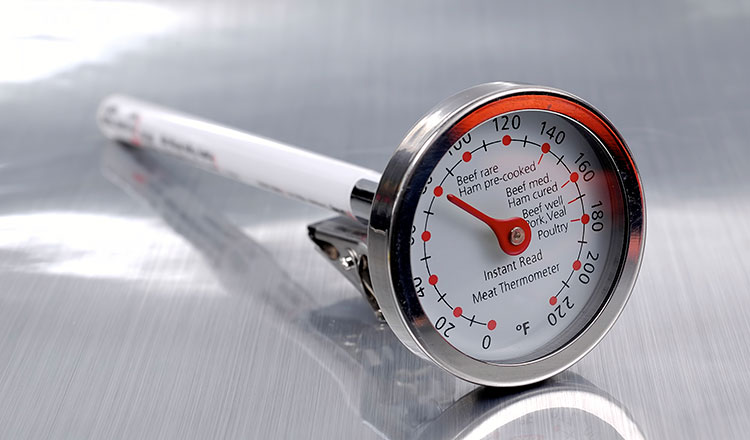Restaurants take food safety very seriously, with clear and exacting guidelines for receiving, holding, preparing, and serving food. And while a lot of our habits and routines at home are probably less stringent than those followed in restaurants, knowing how the professionals keep us safe and happy in their kitchens can help us make the right choices in ours.
Cool Foods Safely
One of the leading causes of food-borne illness is improperly cooled food. Cooked foods that are to be stored need to be cooled to below 41°F as quickly as possible. This should be completed within 4 hours, unless you use the two-stage cooling method.
In the first stage of the two-stage cooling method, foods must be cooled to 70°F within 2 hours. In the second stage, foods must reach 41°F or below within an additional 4 hours, for a total cooling time of 6 hours. According to FDA guidelines, using the two-stage method quickly moves the food through the part of the danger zone where bacteria grow most rapidly.
The proper way to cool hot liquids is to place them in a metal container in an ice water bath that reaches the same level as the liquid inside the container. Stir the liquid in the container frequently so that the warmer liquid at the center mixes with the cooler liquid at the outer edges of the container, bringing down the overall temperature more rapidly.
Semisolid and solid foods should be refrigerated in a single layer in shallow containers to allow greater surface exposure to the cold air. For the same reason, large cuts of meat or other foods should be cut into smaller portions, cooled to room temperature, and wrapped before refrigerating.
Reheat Foods Safely
When foods are prepared ahead and then reheated, they should move through the danger zone as rapidly as possible and be reheated to at least 165°F for a minimum of 15 seconds. If all proper cooling and reheating procedures are followed each time, foods may be cooled and reheated more than once.
Food should be brought to the proper temperature over direct heat (burner, grill, or conventional oven) or in a microwave oven. Do not use hot-holding equipment for cooking or reheating. A steam table will adequately hold reheated foods above 135°F, but it will not bring foods out of the danger zone quickly enough. Instant-read thermometers should always be used to check temperatures.
Thaw Frozen Foods Safely
Frozen foods may be thawed safely in several ways. Never thaw food at room temperature.
The best (though slowest) method is to allow the food to thaw under refrigeration. The food should still be wrapped and should be placed in a shallow container on a bottom shelf to prevent possible cross contamination.
If there is no time to thaw foods in the refrigerator, covered or wrapped food may be placed in a container under running water of approximately 70°F or below. Use a stream of water strong enough to circulate the water around the food.
Individual portions that are to be cooked immediately may be thawed in a microwave oven. Liquids, small items, and individual portions may even be cooked without thawing, but larger pieces that are cooked while still frozen become overcooked on the outside before they are thoroughly done throughout.


